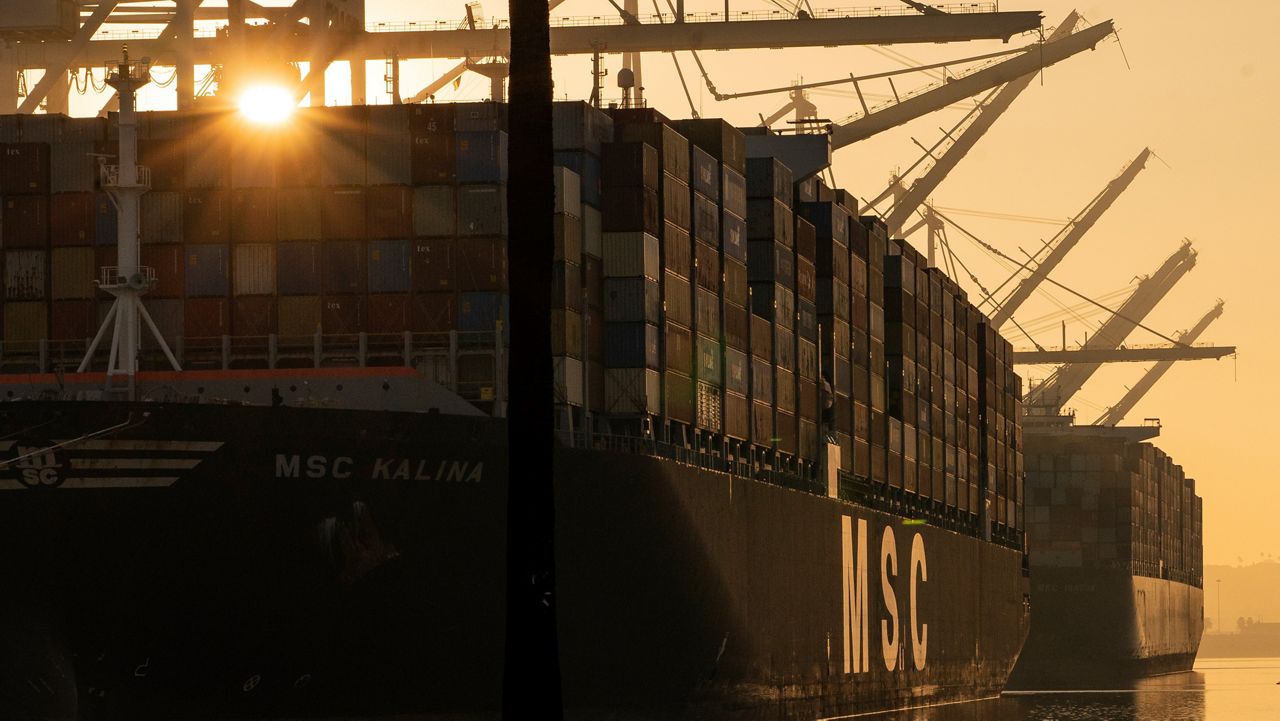LOS ANGELES — The Port of Los Angeles continued to experience cargo declines in March, following last year’s record-breaking volume.
Imports to the port last month fell 35% and exports fell 42% from a year earlier, according to the latest cargo figures released Wednesday.
The reasons for the declines are much the same as they’ve been since the turn of the year, executive director Gene Seroka said during his monthly update. High interest rates and inflation have dampened Americans’ appetite for consumer goods, leaving retailers overburdened with warehouses of inventory they can’t sell and “pumping the brakes on importing more goods,” he said.
But the largest problem is ongoing labor contract talks.
“There’s no bigger priority right now than this contract agreement,” Seroka said of the talks between the International Longshoremen’s and Warehousemen’s Union Local 13 and their employers.
The union has been working without a contract since last July, and uncertainty over how and when a new one will be negotiated led to a worker shortage that closed the port for two days last week. While the Port of LA is not directly involved in the talks, and a strike has not been called, the protracted negotiations are leading some shippers to divert cargo to ports on the Gulf and East Coast.
“What we saw last week is a call to action for everyone to hunker down and get this deal done as quickly as possible to the benefit of the workers and the employer companies to bring in this business,” Seroka said of contract talks that now involve U.S. Acting Secretary of Labor Julie Su.
The Ports of LA and Long Beach have been losing market share to other U.S. ports for the past two decades, Seroka said. In 2002, the two Southern California ports managed 50% of the nation’s container imports and 80% of the trans-Pacific market. Today, they manage 33% of container imports and 56% of trans-Pacific trade.
“I don’t know that we’ll ever claw back enough to reach those heights again, but what we can do is start focusing now on the areas that are of concern and how we can keep up with market growth,” Seroka said.
He cited the need for workforce training and retention, as well as reducing the costs of meeting California’s and the port’s own zero-emissions goals with electric trucks and equipment that can cost multiples of diesel versions.
The Port of LA has set a goal that all 5,000 of its on-dock cargo handling equipment be zero emissions by 2030 and that all 20,000 of the heavy-duty trucks that operate there also be zero emissions by 2035. By 2040, 40% of heavy-duty trucks sold in the state must be emissions-free.
“We’ve got to get started and get started pretty quickly because more cargo means more jobs,” Seroka said. “The health of this port means we do all these outsized things that we want environmentally and with our workforce.”



